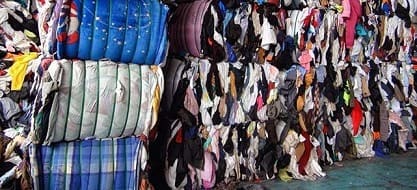By Sabrina Almeida
Is your closet struggling to keep up with purchases? Thanks to cheap clothing, online shopping and social media, many of us are unable to resist acquiring the latest fashion. But a bulging closet and slimming wallet are the least of our worries.
If you’re environmentally conscious that is…
Studies show that the fashion industry is responsible for 10% of global carbon emissions, the second-largest consumer of the world’s water supply as well as pollutes the oceans with microplastics.
Did you know that it takes around 2,700 litres of water to produce just one cotton shirt? That’s the equivalent of one person’s drinking water for approximately two-and-a-half years. Furthermore, textile dyes and treatments contribute up to 20% of the world’s water pollution. With 100 billion new garments being produced every year the impact on the environment is monumental.
BBC documentaries on the real price of producing ‘fast fashion’ and how the lucrative business model is here to stay are eye-opening to say the least.
But the ominous story doesn’t end here. Fast fashion is not only quick to reach the consumer but the landfill too as items either wear out or go out of style and discarded soon too!
A news report from the Recycling Council of Ontario estimated that on an average, Canadians will purchase 70 new articles of clothing every year. This may not seem like a travesty till you learn that the average person throws away 37 kilograms of textiles annually!!!
As a result, 10 million tonnes of clothing are said to reach North American landfills yearly. One garbage truck of clothes is burned or sent to landfills every second, some studies say.
We don’t need research to tell us how many times these items are used before we discard them… but if you’re curious… market research showed that the average consumer bought 60 percent more clothes in 2014 than in 2000 but kept each garment for half as long.
Environmentalists want us to be aware that it’s not just garments and household textiles (linen, etc.) that are going to waste but the resources that went into producing them as well. Like 1,800 gallons of water for each pair of jeans and 700 gallons for a T-shirt, for instance…. Also, discarded clothing made of non-biodegradable fabrics can sit in landfills for up to 200 years. Not to mention the inhuman conditions in which they are produced in Bangladesh, China, India, Vietnam and other countries.
So, this is the real cost of our clothes and desire to keep up with fashion trends.
Experts say all this waste is unnecessary as 95% of it can be recycled and reused. Peel Region’s textile recycling program is one of many global initiatives to stop this misuse. So, if you donate clothing to Diabetes Canada, The Ontario Federation for Cerebral Palsy, Kidney Clothes or the community recycling centre, you’re helping solve the problem. But decluttering your own home is just part of the solution even if you’re not sending items to the landfill. In a report Value Village, which sells used items, stated that Canadians are throwing out far more textiles and home goods than they used to. Meaning we’re buying and discarding more frequently.
So, what’s the solution? Using what you own longer as well as shopping for used and upcycled (repurposed) items perhaps. Or, why not swap clothes among family and friends. You could even use your creative genius to repurpose your own clothes. This lowers the demand for new textiles, protects natural resources that would be used in producing them as well as reduces the burden on the landfill.
And if you must buy, choose sustainable brands that minimize the impact on the environment.
Like plastics, clothes with hybrid fibres are both hard and expensive to separate and process. Therefore, the cheapest way to solve the problem is to reduce demand and production.
Recycling is light on the environment as well as your pocket. And exercising restraint can save closet space, time and money!

